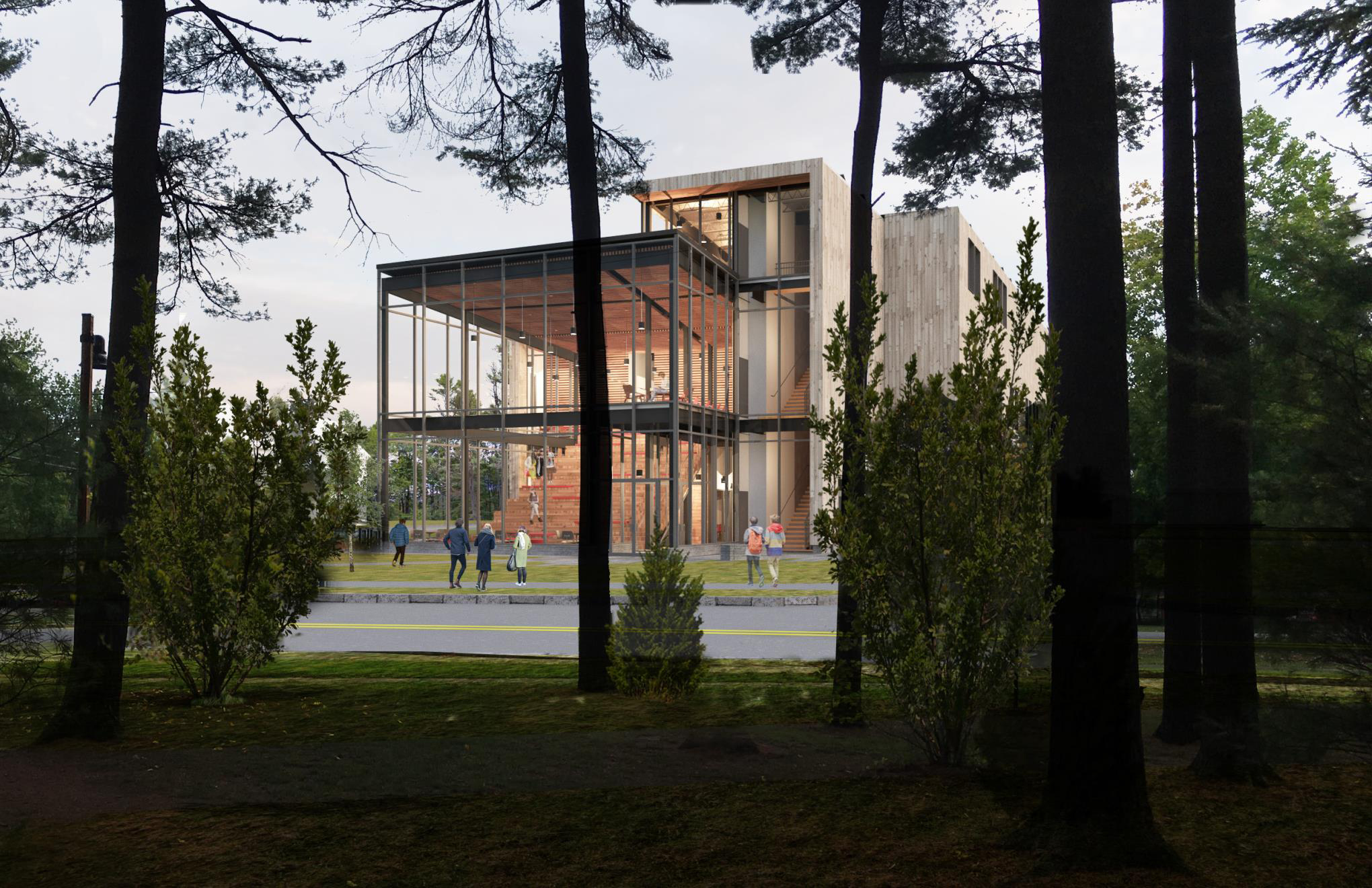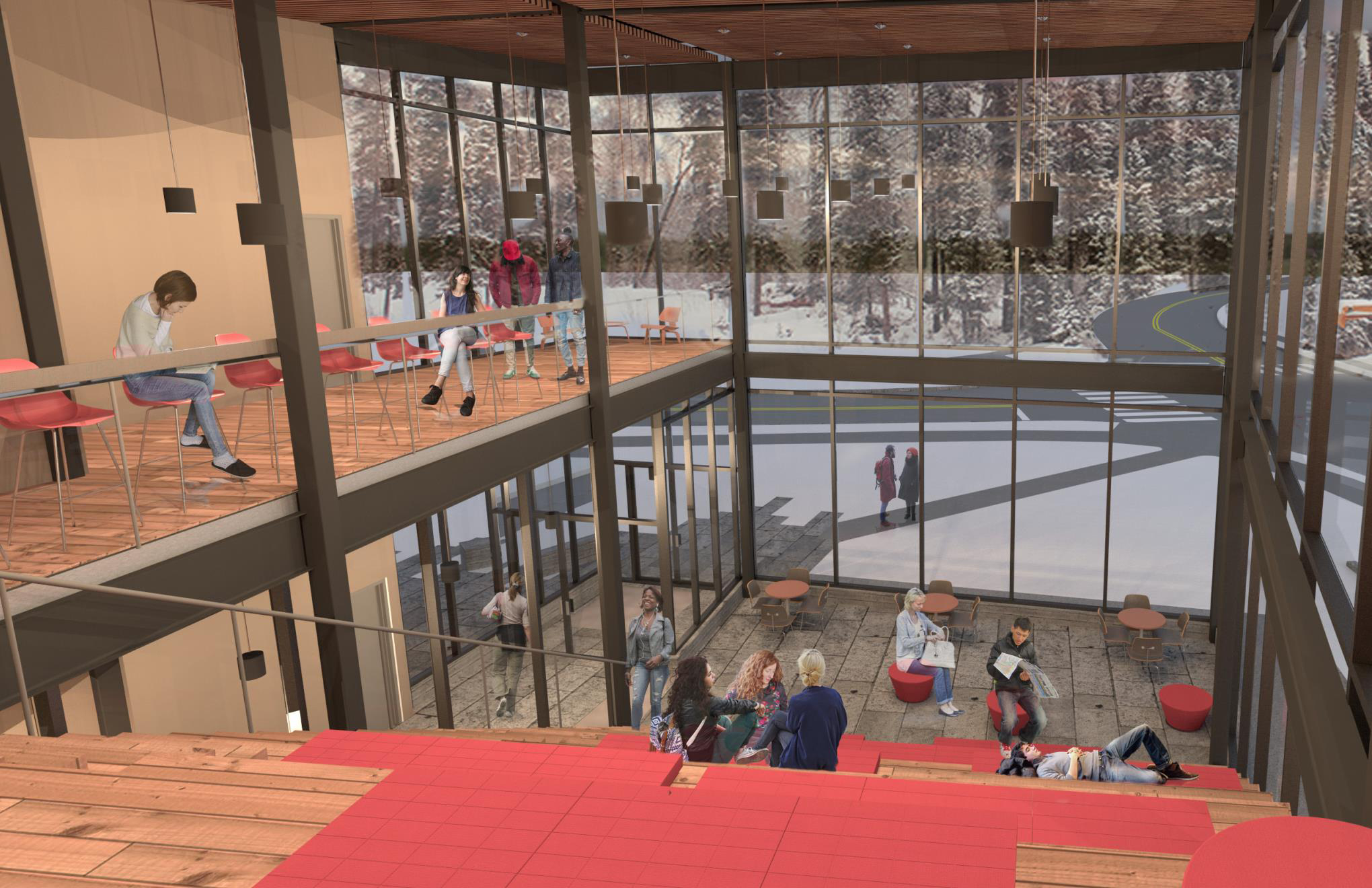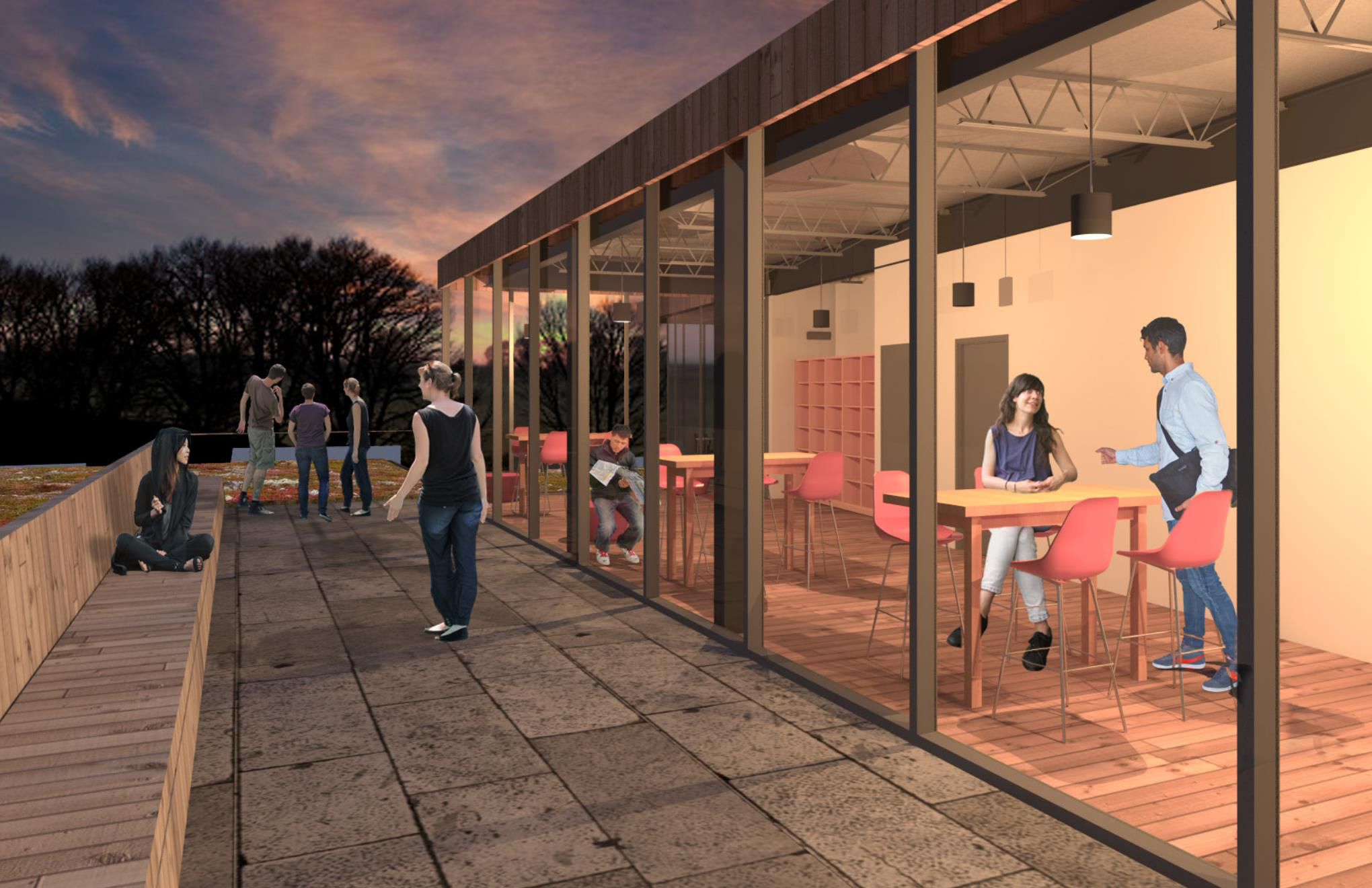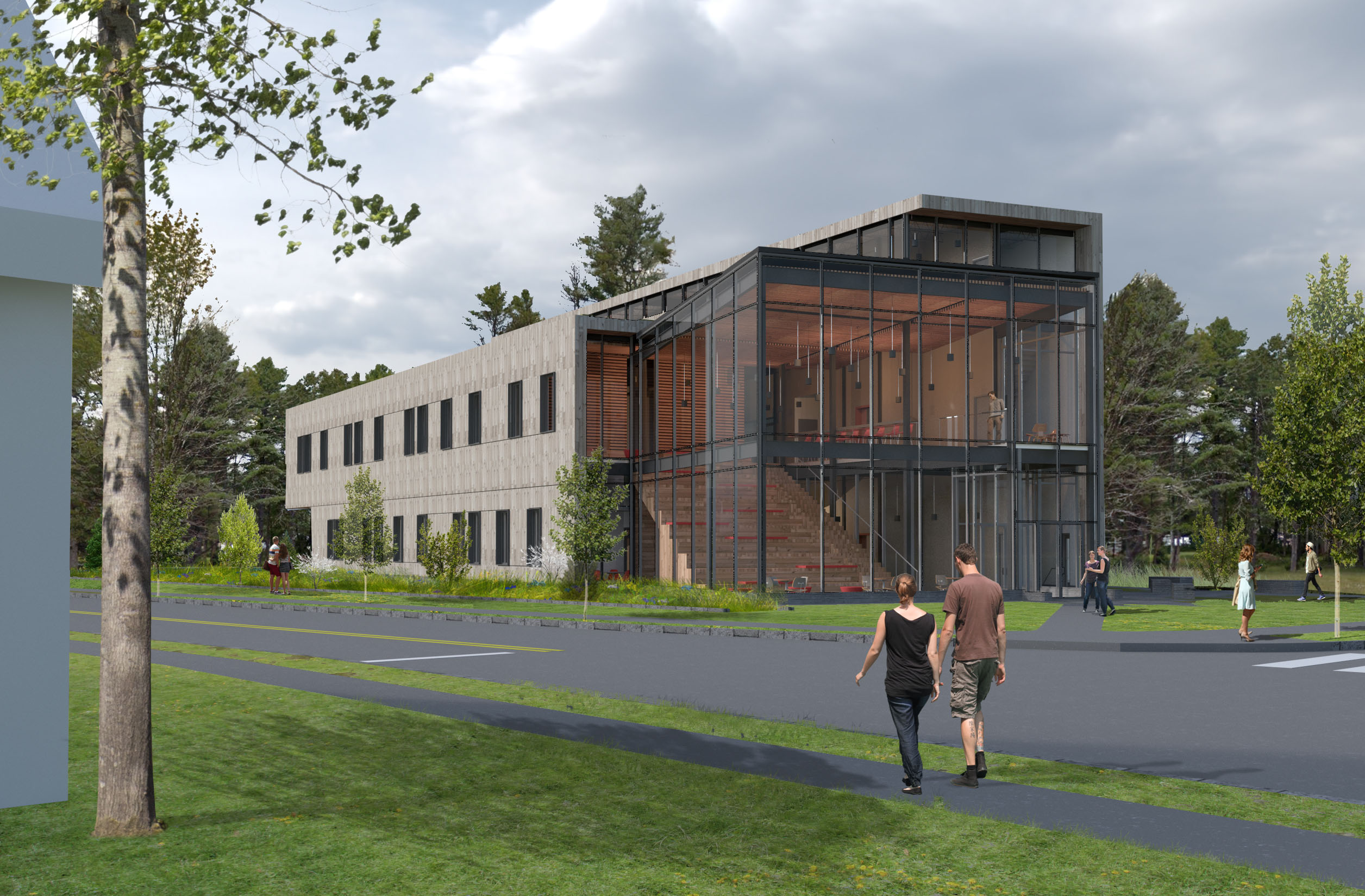College to break ground on Roux Center in May
April 14, 2017
A formal groundbreaking ceremony for the Roux Center for the Environment—a new environmental studies building to be located on the corner of College Street and Harpswell Road—will take place on May 12. The project remains on track to open in the fall of 2018.
The Center was approved by the Brunswick Planning Board on March 28 and awaits official authorization by the Board of Trustees. Construction is expected to begin on June 1.
The two-and-a-half story building will feature a large glass atrium with stadium-style bench seating as well as a terraced deck and a “living roof” with plants that students can use for research. Senior Vice President for Finance and Treasurer Matt Orlando emphasized the openness and versatility of the Roux Center’s design.
“Most of our academic buildings were built 50 [or] 100 years ago, and you have a very traditional sort of lecture-style classroom experience,” said Orlando. “With the technology we’re going to put in the building and the flexible classrooms and flexible furniture, this will provide a lot of flexibility to professors to conduct classes in a variety of ways.”
The building is set to be the first on campus to attain Leadership in Energy and Environmental Design (LEED) Platinum certification, according to the guidelines established by the U.S. Green Building Council.
The College, which does not own all of the abutting property, has worked closely with the Roux Center’s future neighbors.
“As far as the Roux Center, I would say that we are cautiously optimistic,” said Kevin Cashman, who lives in the nearby neighborhood. “Bowdoin did a good job, in our opinion, reaching out to us, trying to include us in the placement of the building, the landscaping piece.”
Associate Professor of History and Environmental Studies and Director of the Environmental Studies Program Matthew Klingle said the Roux Center’s classroom and office setup will demonstrate the College’s interdisciplinary approach to the study of the environment.
“Students sometimes mistakenly think, as do people from outside of the College, that we have an environmental science program,” said Klingle. “Couldn’t be farther from the truth. It’s an environmental studies program, which means that we integrate and interrogate and synthesize from the sciences, the social sciences, the arts and the humanities. And my hope is that the building will be a physical representation of—as well as facilitate—those ongoing efforts to show that the study of the environment really is the study of the liberal arts.”
Floors in the Center will not be assigned by department, which Klingle hopes will foster cooperation between professors and students across different fields.
“Here at Roux, faculty are purposely going to be mixed up,” he said. “My hope is that walking through the hallways, you’ll have those random conversations, those chance encounters, those opportunities where students and faculty and staff will engage with one another around common interests on the environment.”
The building will not have its own parking, and users will be expected to utilize the lot behind the Asian Studies building or the Coffin Street lot.
“There’s no need for additional parking,” Director of Capital Projects Don Borkowski. “If the lot behind Asian Studies is full, you’ll be able to take the driveway down and park in the Coffin Lot.”
For the past year, a group of faculty and staff known as the Roux Committee has been working with contractors and architects from Cambridge Seven Associates Inc. in order to design a building that best serves the needs of the College. Their efforts will continue even as construction begins.
“[The committee] remains actively involved in design issues, and thinking about what is active learning, how does it take place in a classroom, what kind of classroom setups are ideal for learning and teaching,” said Interim Dean for Academic Affairs Jen Scanlon. “Although we have the building plan, there’s still a lot of work that will happen over the course of the next year until the building opens.”
The Roux Center for the Environment was funded by a $10 million gift from Barbara and David Roux, which has since been augmented by other funds secured by President Rose and the Office of Development.
Eduardo Jaramillo contributed to this report.

 Courtesy of Bowdoin Office of Communications
Courtesy of Bowdoin Office of Communications Courtesy of Bowdoin Office of Communications
Courtesy of Bowdoin Office of Communications Courtesy of Bowdoin Office of Communications
Courtesy of Bowdoin Office of Communications Courtesy of Bowdoin Office of Communications
Courtesy of Bowdoin Office of Communications
Comments
Before submitting a comment, please review our comment policy. Some key points from the policy: